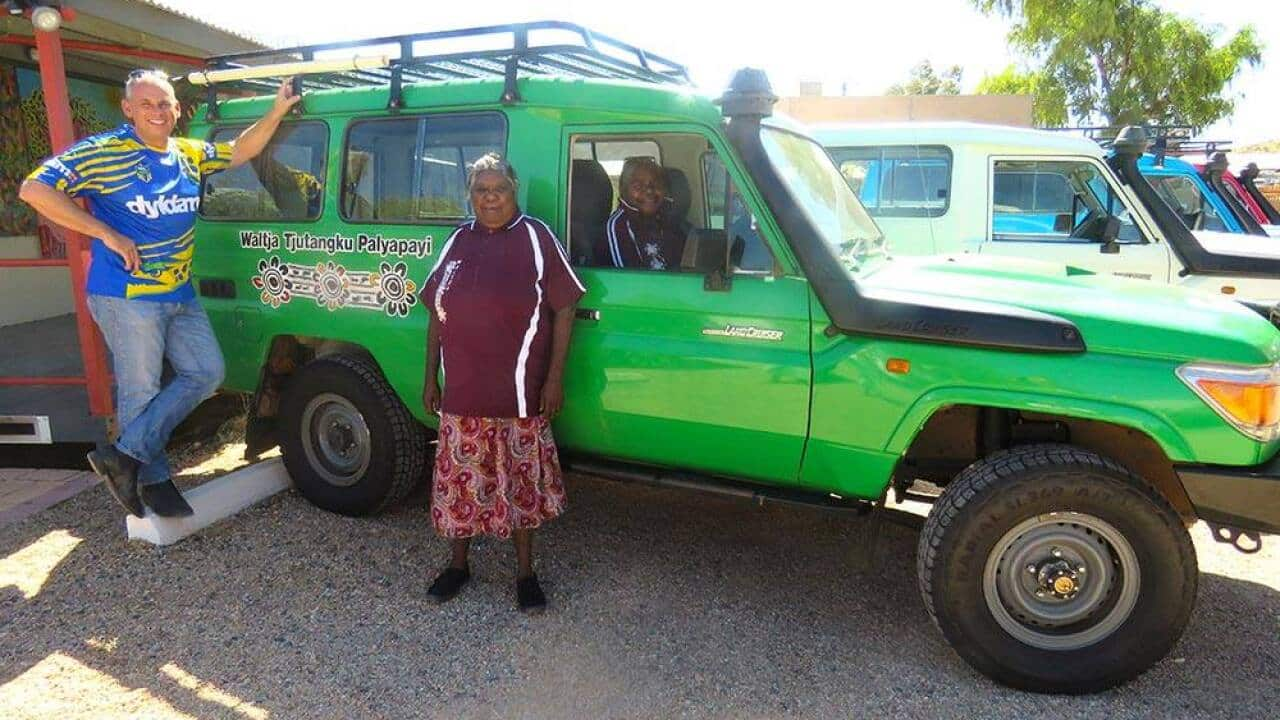Deep in the Australian desert, 35 Indigenous students investigated ecological damage caused by feral camels to a vital natural spring 400 km west of Alice Springs.
Ilpili springs were once two pristine desert pools surrounded by paperbark forest. Today, the springs have been badly damaged by the dung of feral camels which have polluted the spring water.
“The springs dried up last year, because they were blocked by all the dung,” said Senior Central Land Council Luritja ranger Terrence Abbott, who is a Traditional Owner of the springs and lived there for a time when he was a boy. “We have started to dig them out again. And we have dug a dam that is filled from a bore, so the camels can drink there instead.” The visit to Ilpili springs was part of Science Pathways on country classes by students from the Watiyawanu, Walungurru and Kiwirrkura schools in the Northern Territory and Western Australia. The Science Pathways program builds on the strengths of Aboriginal desert communities by using a two-way approach to align traditional ecological knowledge with Western science.
The visit to Ilpili springs was part of Science Pathways on country classes by students from the Watiyawanu, Walungurru and Kiwirrkura schools in the Northern Territory and Western Australia. The Science Pathways program builds on the strengths of Aboriginal desert communities by using a two-way approach to align traditional ecological knowledge with Western science.

Students collect small water animals used to monitor water quality (CSIRO) Source: CSIRO
There are estimated to be one to two million feral camels in Australia with the population doubling approximately every eight to nine years. Most of the feral camels live in the remote desert regions of the Northern Territory and Western Australia. Camels were brought to the continent by European settlers in the 19th Century as a means of transport in remote desert regions.
“The three day trip to Ilpili springs provided wide-ranging lessons about country for students in their first language,” said head teacher, Larry Kenny.
Rangers taught the children how to measure and record water quality. The school children participated in an activity collecting small water animals which are also used to monitor water quality. In addition, they learned how to set for small mammals.
After the trip, the Watiyawanu students wrote a bilingual booklet about the two-way science that they learned on their trip.
“It is really good to take schoolkids on bush trips, showing them the country, and make books about these trips. So the schoolkids can know the rock holes and other places when they grow up,” said Rita Turner, a senior assistant teacher at the Watiyawanu School. “It’s good for their minds to know how to write their language and write about their culture.”
Science Pathways for Indigenous Communities is one element of the Indigenous STEM Education Project which is delivered by and funded by the BHP Billiton Foundation. In the Northern Territory, Science Pathways operates mainly in three Western Desert communities, working with Indigenous assistant teachers and elders to develop Two-way Science programs with an on-country focus. Science Pathways also operates in three Western Desert communities in Western Australia and will extend this to a total of six communities in 2017.



